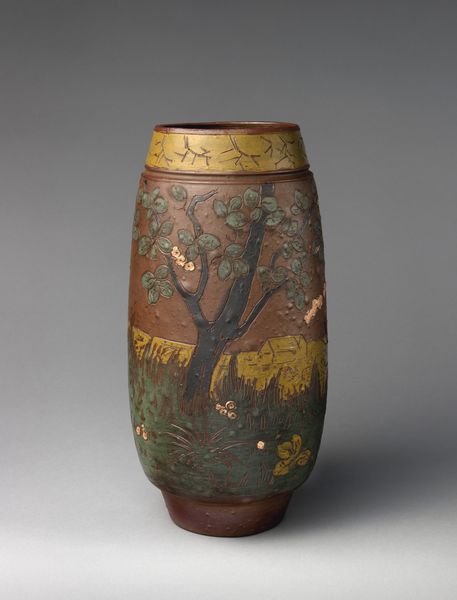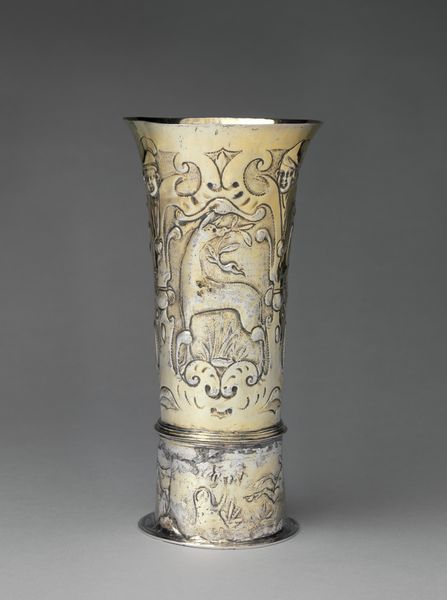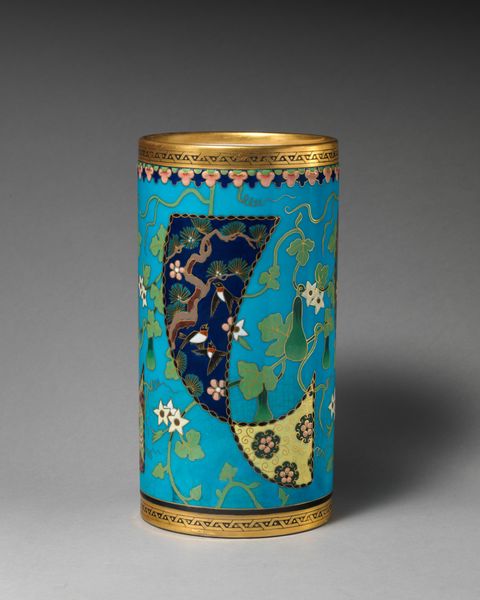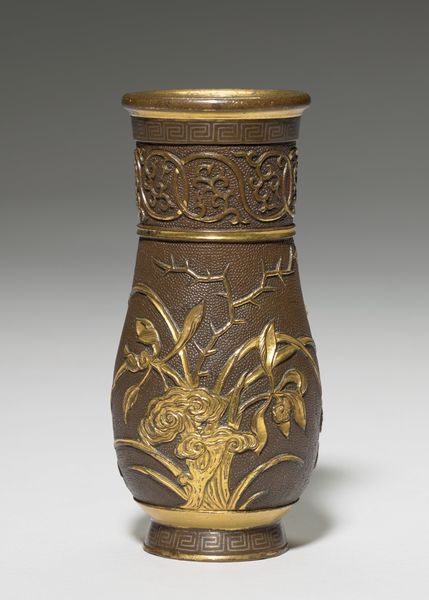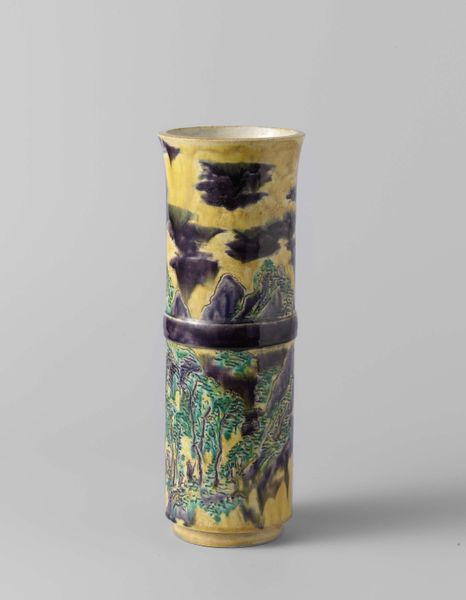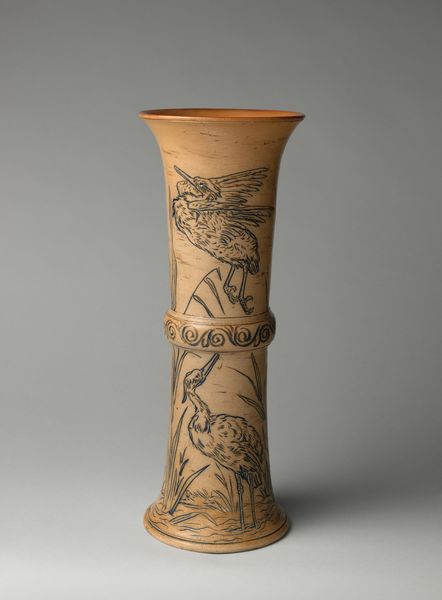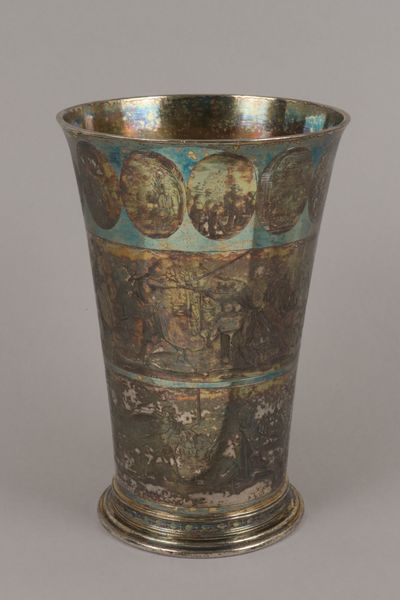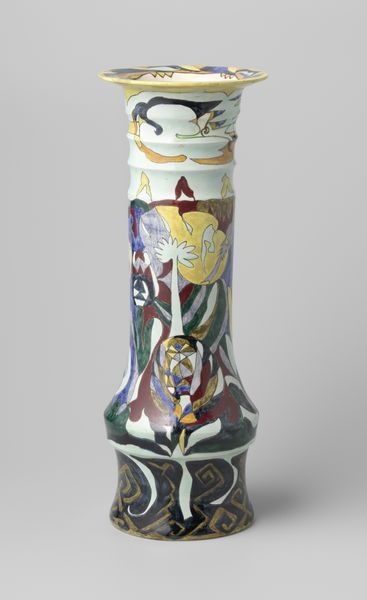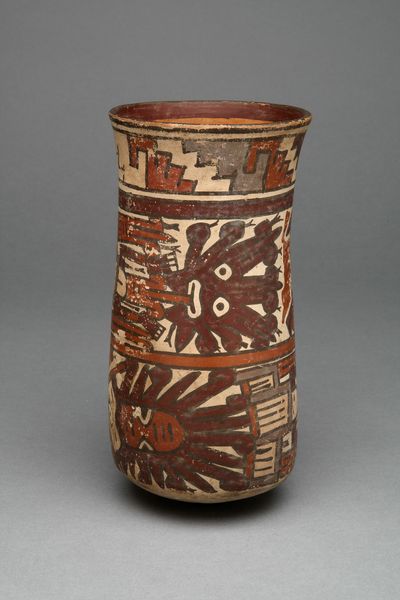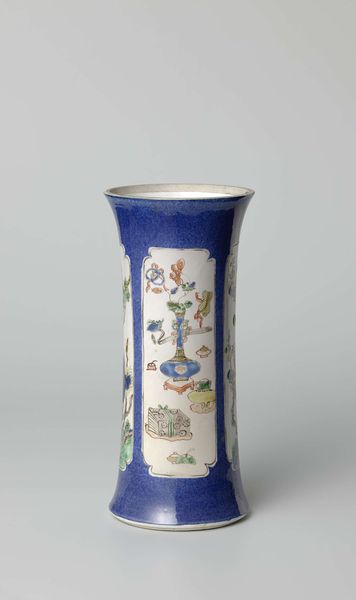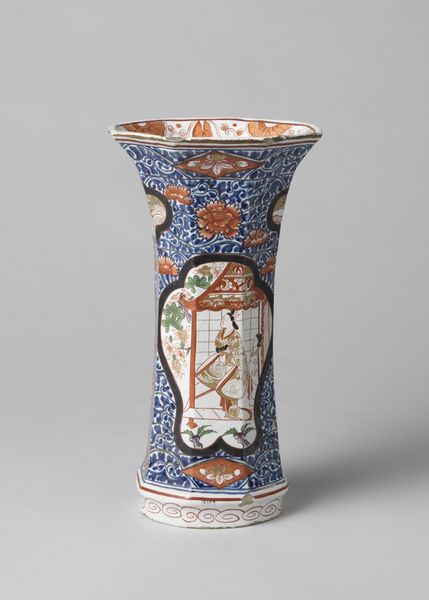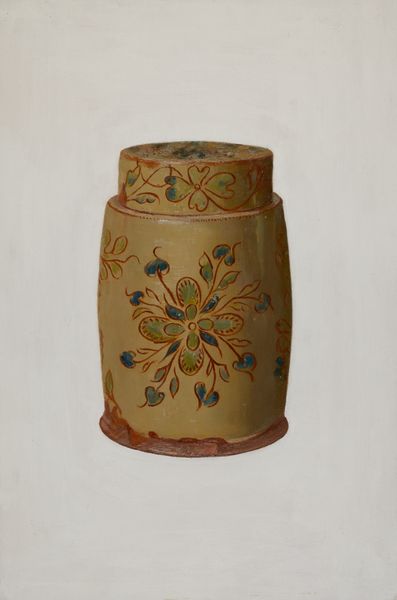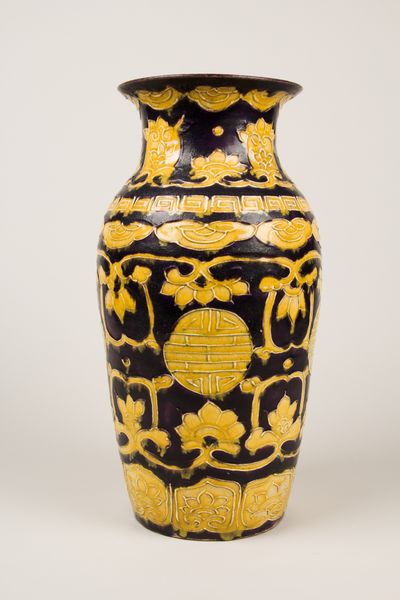
ceramic, sculpture
#
ceramic
#
sculpture
#
decorative-art
Dimensions: Overall (confirmed): 27 5/16 × 9 7/8 × 9 7/8 in., 26.1 lb. (69.4 × 25.1 × 25.1 cm, 11.8 kg)
Copyright: Public Domain
Curator: Here we have a piece from the Metropolitan Museum of Art, a ceramic sculpture titled "Vase with Rooster," created between 1879 and 1889 by Haviland & Co. Editor: It's quite striking! The color palette—the combination of blues and browns—feels both vibrant and earthy, and that central rooster figure really pops. Curator: Absolutely. Roosters, historically, carry significant symbolism. In many cultures, they're associated with courage, vigilance, and even resurrection—think of the rooster as a symbol of dawn, of a new day breaking. What associations do you see emerging from this image? Editor: The decorative details, though naturalistic, appear constrained on the vessel. We find beauty here, certainly, yet is it presented on the terms, perhaps, of bourgeois interiors? How was it situated? Who enjoyed such objects, and under what circumstances? Was the owner alive to the rooster's deep historical symbolism, or just its superficial decorative effect? Curator: These pieces served as symbols of status and wealth, frequently displayed prominently in parlors and dining rooms. These motifs—the rooster, the flowers—would resonate with particular meanings. What I find most compelling is how a simple form like a vase becomes a site where different levels of cultural and personal meanings converge. Editor: I'm reminded how the decorative arts often navigate a tricky space—desired for pure aesthetic delight but simultaneously imbued with the politics and power structures of the time. Perhaps the very act of containing and framing nature reflects a human desire for control, a sentiment deeply entrenched in that era's social mindset. Curator: That's an insightful reading. The flowers that surround the rooster aren't just there for ornamentation, they are creating the larger historical symbolism for the people engaging with it at that moment in time. They contribute to a specific cultural narrative being spun at the moment this item appears in a person's home or life. Editor: Seeing it from that vantage gives me so much to consider in regards to the legacy of domestic design in the nineteenth century! It all comes down to examining the forces that influence the shape of even our most ordinary, intimate objects.
Comments
No comments
Be the first to comment and join the conversation on the ultimate creative platform.
